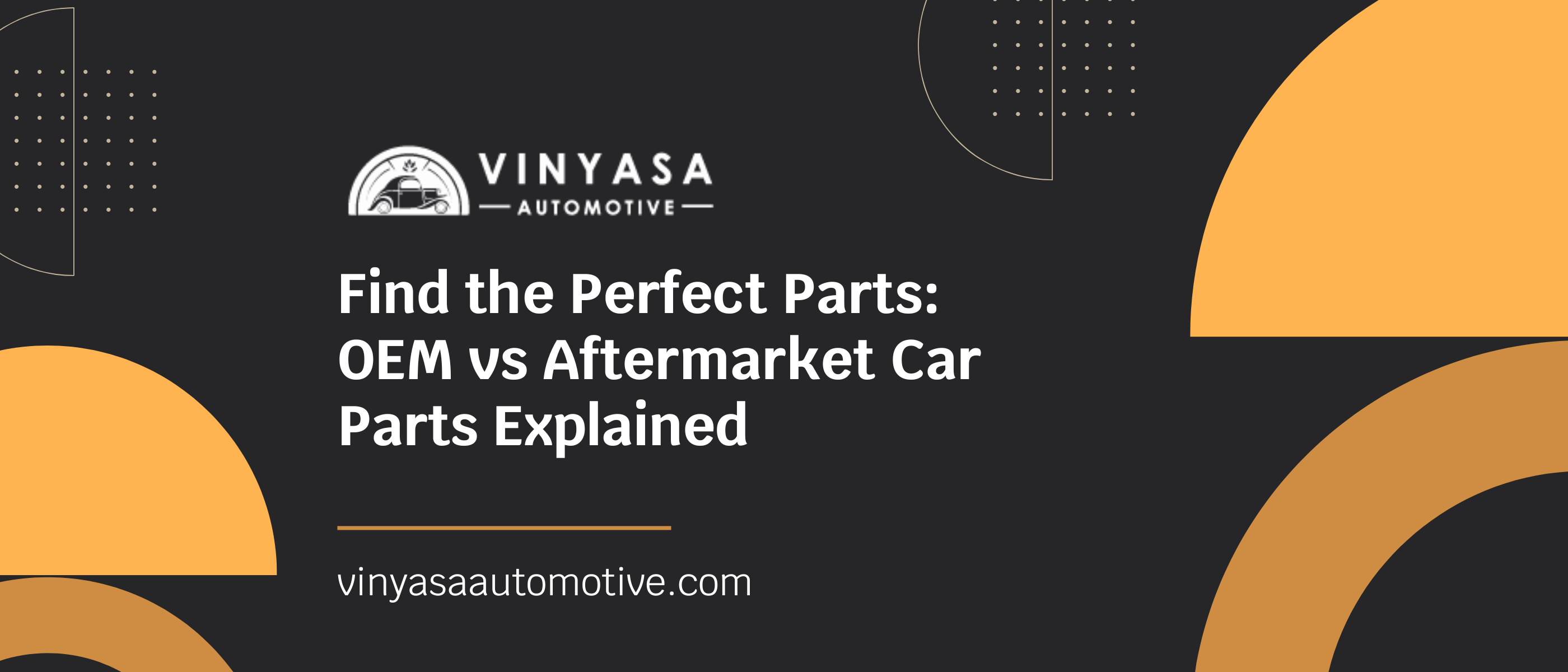- Free shipping for orders over 250$ in the United States
$0.00
Find the Perfect Parts: OEM vs Aftermarket Car Parts Explained

When faced with the decision of replacing parts on your vehicle, you’ll encounter a choice: OEM versus aftermarket? OEM, or Original Equipment Manufacturer, parts are produced by the same company that manufactured your vehicle, while aftermarket parts are made by other companies. In this article, we’ll weigh the advantages and disadvantages of using OEM parts versus aftermarket parts, helping you determine the best fit for your vehicle.
PROS of OEM Parts:
- High Quality: OEM parts adhere to the same standards as those originally installed in your vehicle, ensuring reliable performance.
- Warranty: Many OEM parts come with a manufacturer’s warranty, offering assurance in case of any issues.
- Exact Fit: Since OEM parts are crafted by the vehicle manufacturer, they are guaranteed to fit perfectly, eliminating any compatibility concerns.
CONS of OEM Parts:
- Expensive: OEM parts often come with a higher price tag compared to aftermarket alternatives, which may not suit budget-conscious consumers.
- Limited Selection: OEM parts are exclusively produced by the vehicle manufacturer, leading to a restricted choice, especially for older or less common vehicles.
- Availability: Procuring OEM parts may involve ordering them from a dealer or manufacturer, resulting in longer wait times and potentially higher costs compared to aftermarket options.
PROS of Aftermarket Parts:
- Cost: Aftermarket parts are typically more affordable than OEM counterparts, appealing to consumers looking to save money.
- Availability: With numerous companies producing aftermarket parts, there’s usually a wider selection available, even for older or less popular vehicles.
- Performance: Some aftermarket parts, such as high-performance air filters or exhaust systems, are engineered to enhance vehicle performance.
CONS of Aftermarket Parts:
- Quality: Since aftermarket parts come from various manufacturers, quality can vary significantly. It’s crucial to research and select a reputable brand.
- Fit: Aftermarket parts may not always provide a perfect fit for your vehicle, potentially leading to performance or safety issues.
- Warranty: Unlike OEM parts, aftermarket parts may not come with a warranty, posing a risk in case of malfunctions.
Choosing the Right Parts: When deciding between OEM and aftermarket parts, consider factors like your budget, vehicle model, and specific requirements. If you prioritize top-notch quality and precise fit and are willing to invest more, OEM parts may be the way to go. Conversely, if you’re working within a budget or seeking parts not available from the manufacturer, aftermarket options could be preferable. Ensure to opt for a reputable manufacturer and conduct thorough research before making a purchase.
Conclusion: In summary, both OEM and aftermarket parts offer advantages and drawbacks. While OEM parts guarantee quality and fit but come at a higher cost and limited availability, aftermarket parts are more affordable and widely accessible but may vary in quality and fit. By evaluating your budget, vehicle specifications, and preferences, you can make an informed decision on which type of parts best suit your needs. For additional guidance, consult a trusted mechanic or parts expert.
You may want to read
Join our newsletter and get exclusive offers
Get our emails for info on new items, sales and much more.
Register now to get latest updates on promotions & coupons. Don’t worry, we don't spam!

Your one-stop shop for all things automotive! From oil filters to engine parts, we’ve got you covered.
Need Help?
Monday – Friday: 9:00-20:00
Saturady: 11:00 – 15:00


